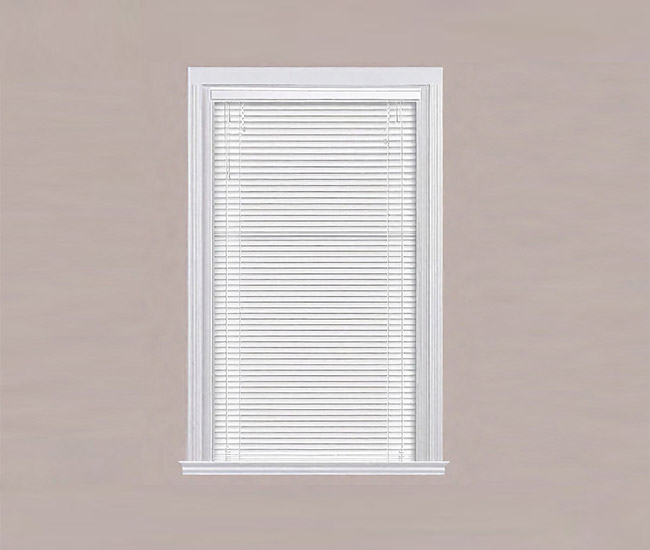Interested in buying new blinds, shades, shutters, drapes, swags, or valances? Need help which type of curtains or blinds go on which type of windows? How to match blinds or shades in a room? Which window treatment is more budget-friendly? In this window treatments buying guide: 11 factors to consider, we are giving you all of the answers with real life examples.
Window treatments of a home are an aesthetic and functional addition that has a direct correlation to your comfort and happiness. From wood shutters and faux wood blinds to Roman shades, roller shades, and vertical blinds, there are lots of options to choose from.
This post breaks down how to buy blinds, shades, curtains, or shutters for your unique space and decor style. Browse our buying guide to learn how to choose the perfect window treatment for your needs, both aesthetic and functional.
Why Buy Window Treatments for Your Home?
Blinds and shades are an important part of your home’s decor. They can protect you from the sun, provide privacy, and even add to the appearance of your windows. Here we’ll walk you through some of the most popular window treatment options to help you find the perfect style for your home. Especially, we’ll help with what to consider when deciding what’ll work best in your home’s unique settings.
This buying guide also tells you about the best place to shop for window treatments. Going through this window treatment buying guide will enable you to make a futuristic decision.
There’s so much to consider when choosing window treatments! What type of blind or shade is right for you? Which features are must-haves? How do you measure for your new shades or blinds?
No matter what style or look you’re going for, we have a buying guide for every type of blind and shade. From wood shutters and roman shades to roller shades, vertical blinds, and more, we’ll help you find the right product for your needs!
Whether you want something simple or something more complex, we’ve got some great tips on choosing the perfect window treatments for your home.
Also check out our other Buying Guides for tips and suggestions on the various styles, features, and options you should consider when choosing a new blind or shade!
11 Factors to Consider When Buying Your Next Blind
Have you ever been shopping and thought to yourself, “Wow, I really love this blind, but I just don’t know if I can commit to buying it”?
Of course, you have. We’ve all been there. But the good news is that we can help you make the right decision!
With so many styles of blinds, shades, and curtains to choose from, shopping for the right window treatment for your home isn’t always an open-and-shut deal. To facilitate you with your decision, here we’ve gathered our best advice.
Here are 11 things to consider before making any purchase:
1. What Will the New Blinds Look Like? (The Style!)

The first thing to consider is what kind of style you want for your new blinds. Are you looking for something simple and classic? Or do you want something more modern? Maybe something that matches the rest of your décor? It’s important to think about these things ahead of time so that you don’t end up with a bunch of mismatched shades once everything is installed.
2. How Much Light Do You Want Your Blinds to Block Out or Filter Out?

If you want your home to be dark at night or during certain times of the day (like when everyone is sleeping), then it’s important that any new blinds block out as much light as possible without sacrificing style or functionality. For softly filtered light, choose sheer light filtering blinds. If you want total darkness, we highly recommend room darkening roller blinds or blackout cellular shades.
3. Color Scheme of the Blinds

What colors do you want your blinds to be? If you’ve already considered the color scheme of the room they’ll be installed in; it should be easy to pick out a blind that will fit right in. But if you’re looking for something bolder or more colorful than what’s already in your space, consider buying blinds that are a little more daring—they’ll really make a statement!
4. Consider Matching Window Treatments
It’ll be a good idea to match and color-coordinate the window treatments of the same room. However, you need not match the window coverings of the adjoining rooms.
5. Ensure Ordering Cut-to-Width Blinds
The window’s width is an important consideration when buying a new blind. You want it to fit snugly without being too tight or too loose, so take measurements and make sure that whatever size you choose will fit snugly without falling off or hanging too loosely from the wall. Browse our measuring instructions here.
6. Make Sure the Material Is Right for Your Needs

Blackout fabric is good if you’re trying to sleep in; the sheer fabric is good if you want light in but not too much heat or sun exposure—or if you want privacy without blocking out all light entirely!
7. Do Your Windows Face East or West?
East-facing blinds will keep the sun out of your room during the morning hours, which can be helpful if you live in an area where there are long hours of sunlight. On the other hand, west-facing blinds will help keep your room cooler in the afternoon, which can make them ideal for people who live in areas with lots of heat and humidity.
8. What Color Are Your Walls?
If they’re white or beige, you might want to go with something darker like charcoal or black. On the other hand, if they’re already dark colors like greens or purples, then a white or light-colored shade would be a better fit.
9. Interior Design Style of the Room
Do you want beautifully patterned roman shades on your windows? Or are sleeker roller shades more attractive to your eye? If so, what kind of style do they have—do they have pleats or grommets?
10. What Kind of Window They’ll be Going on?
There are a few different kinds of windows out there—some have more space on either side than others, and some have more glass than others. Popular types of windows used in buildings today include fixed windows, casement windows, sliding windows, bay windows, single hung windows, double hung windows, skylights, and louvered windows. Vertical honeycomb blinds, designed to move side to side, are the perfect choice for sliding glass doors. On the other hand, no-drill shutters, wooden blinds, and roller shades would go well on bay windows. Similarly, motorized cellular shades are always a classic choice for skylights.
11. Your Budget

Are you looking for budget-friendly Privacy Mini Blinds or Light Filtering Double Cellular Shades, with costs ranging from $30 to $100 per piece for a small window? Or do you have a higher paying capacity of up to $500 and would like to go for luxurious Motorized Roman Shades?
Buying Guides for Different Types of Window Treatments
FAQs
What are the most up-to-date window treatments?
Insulating honeycomb cellular shades, natural wood blinds and shades, sheer curtains, and motorized window treatments are all the most up-to-date window treatments, having a major moment currently. Roller blinds with clean-lined styles and sleek looks complement interior design styles well. To enhance aesthetic appeal, you can add decorative details like embellished sheers and textured valances.
What should window treatments match?
The window treatments of adjoining rooms don’t have to be exactly the same. When matching window treatments of a room, select similar colors, designs, patterns, and styles. In some situations, you may want to mismatch window treatments on purpose. For example, you may want to bring more attention to a specific window in the room.
What are the three basic categories of window treatments?
Below are the three basic categories of window treatments.
1. Soft Window Treatments
Soft window treatments are usually made of soft fabrics, such as cotton, linen, and wool. The examples include curtains, draperies, drapes, sheers, valances, and swags. They are used with or without liners to provide privacy and light control.
2. Hard Window Treatments
Hard window treatments are made of tough, durable materials, such as wood, faux wood, polyresin, and vinyl. Shades, blinds, and shutters are the examples.
3. Combined Window Treatments
These are window treatments that offer a mix of both soft and hard types, adding a touch of style, elegance, and functional efficiency to your windows. For example, curtains could be added to window blinds to soften their effect. Also, you can add a blackout fabric liner to a shade or blind to enhance light control, privacy, temperature regulation, and energy efficiency.
What is the best time of the year to buy window blinds?
If you want to save money, the best time of the year to buy new window blinds is off-season, which is typically in the cold months when the demand is low, especially in the heart of winter. Retails (both brick-and-mortar shops and online stores) often have sales on during this time with up to 70% off! So, you can get great discounted products (with free shipping) on your purchase of a new window blind.
Need More Help?
Still unsure which of the window treatments is the right choice for your unique settings? Get in touch for free consultation! Use 24/7 live chat or give us a call at (800) 863-6109 to contact our experts for DIY window treatment solutions.
